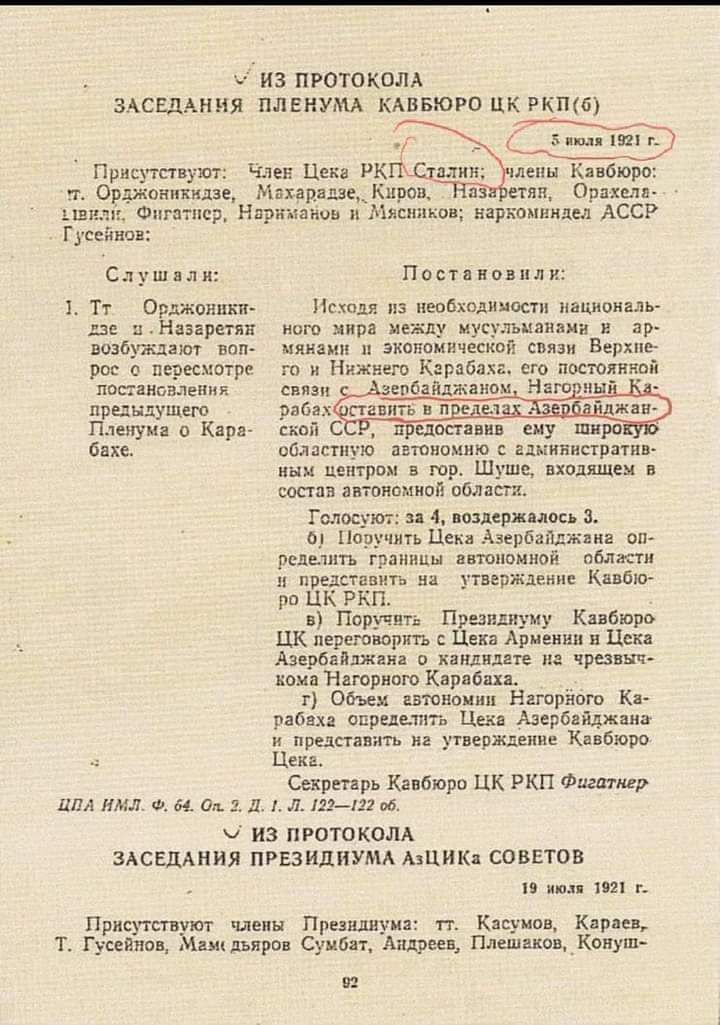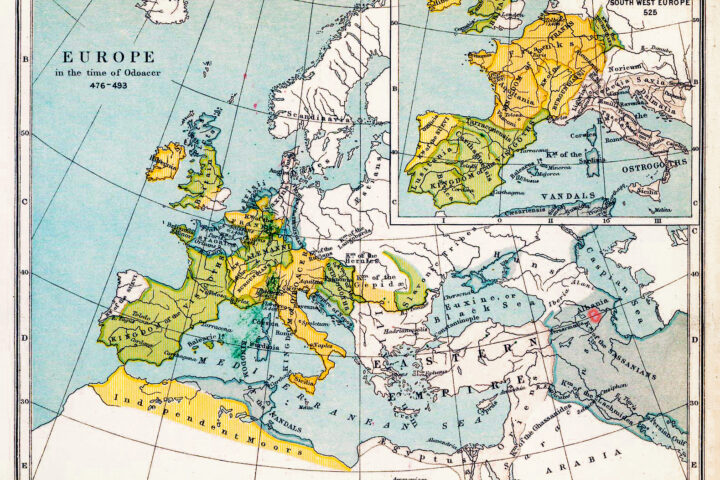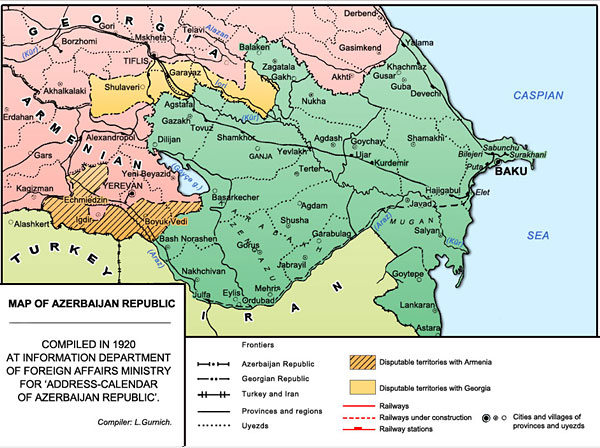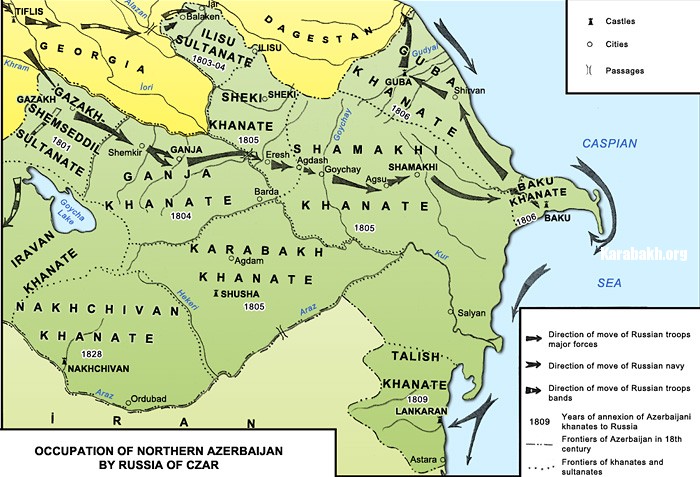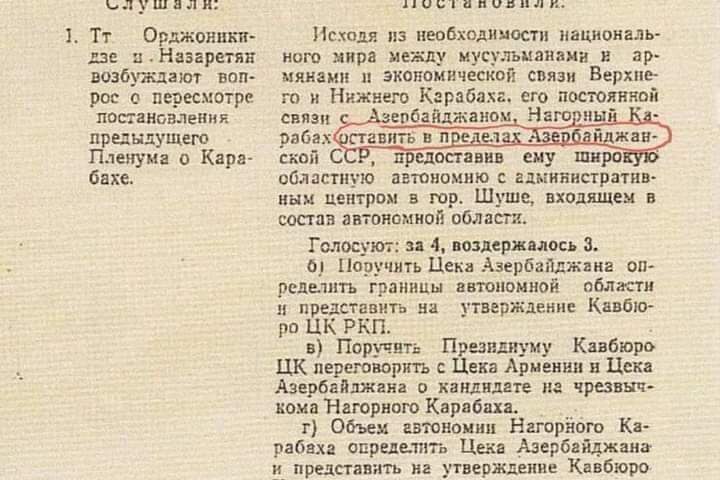Nariman Narimanov: “Azerbaijan Went as far as Renouncing its Territory in Favor of Armenia When This Should Not Have Been Done for Political Reasons”
The Armenians interpreted Narimanov’s Declaration as the transfer of the Zangezur and Nakhchivan uezds; this played into the hands of those forces in Bolshevist Russia that did not want Azerbaijan to preserve its territorial integrity.
In 1923, in a letter to Lenin, Nariman Narimanov admitted that this had been a mistake by saying: “Azerbaijan went as far as renouncing its territory in favor of Armenia when this should not have been done for political reasons.”11
The Russian-Armenian military-political treaty signed on 2 December, 1920 registered the Zangezur Uezd as part of Armenia12; according to the latest population census, however, the Muslims outnumbered the Armenians: 123,095 and 99,257, respectively.13
On 24 December, as soon as part of Zangezur had been transferred to Armenia, Commissar Extraordinary of Karabakh and Zangezur Sh. Makhmudbekov sent a report to Narimanov (on Narimanov’s instructions, a copy was sent to Orjonikidze), in which he wrote in particular that “the representatives of four units of lower Zangezur came to me to resolutely announce that they wanted to remain under Azerbaijan Soviet power. If their desire is ignored, they would like to know where they could move.”14
In another of his dispatches sent to N. Narimanov and G. Sultanov on 30 December, 1920, Sh. Makhmudbekov described the situation in Zangezur as critical because of the constant threat of a Dashnak attack. He wrote that if the Center, absolutely convinced that the situation was under control, would remove its troops from the vast territory, which covered hundreds of versts, it should allow the locals to mobilize their own forces to protect Karabakh and Zangezur and concluded that “this is possible and necessary.”15
On 15 February, 1921, Sh. Makhmudbekov supplemented his report of 24 December with two pages of information addressed to Narimanov, Sultanov, and Karaev: threatened with pogroms, the Muslim population of Karabakh and Zangezur needed Baku’s help to protect themselves against the emboldened Dashnaks. He warned that the Dashnaks, “who cannot so far press on to Kurdistan, have stirred up a revolt in the 2nd Varandian part of the Shusha Uezd to merge with the 1st Khankendi part and isolate Nagorno-Karabakh from the valley.”
To protect the Muslim population of Karabakh and Zangezur, the commissar extraordinary suggested that Khosrov bek Sultanov (the brother of Sultan bek Sultanov), former Governor-General of Karabakh and Zangezur, well known as defender of the Azeris (arrested at the urgent request of the Armenians), be released from prison.
Sh. Makhmudbekov added a few hand-written lines, stating the following: “If Khosrov Sultanov is released, I personally shall vouch for his loyalty and fidelity and assume responsibility for his acts.”16 On 28 February, the business manager of the Council of Peoples’ Commissars transferred the report to G. Orjonikidze.
Why did Narimanov suggest in his Declaration that Zangezur and Nakhchivan be transferred to Armenia?
The idea belonged to the Politburo of the C.C. R.C.P. (B.). Back on 4 November, 1920, during his trip to the Caucasus, Stalin attended a joint meeting of the C.C. Az.C.P. (B.) and the Caucasian Bureau of the C.C. R.C.P. (B.), which listened to Legran’s report on the situation in Armenia and passed a decision. Point “b” of the document, which related to the discussed treaty between Russia and Armenia, said the following: “To inform, at the same time, that the Politburo insists that the point on the transfer of Nakhichevan and Zangezur (suggested by Moscow.—J.H.) is not advantageous either politically or strategically and can only be carried out in an emergency.” Point “d” instructed Nariman Narimanov to substantiate the Politburo’s opinion about Nakhchivan and Zangezur.17
This meant that there was no Karabakh problem at all initially, which was why it was not discussed.
On 20 November, 1920, a diplomatic mission of Soviet Russia arrived in Erivan to monitor the talks between Turkey and Armenia underway in Gumri and to sort out Armenia’s territorial claims to Azerbaijan and Georgia. People’s Commissar for Foreign Affairs Georgy Chicherin was informed that “today, the continued existence of the Armenian people depends not so much on military force as on diplomacy. We should abandon party romanticism and arm ourselves with grim realism.”
The diplomatic mission deemed it necessary to remind the people’s commissar that “when talking to the Turks in Batumi (at the peace conference held in Batumi in May-June 1918.—J.H.), Kachaznuni and Khatisyan agreed to transfer Karabakh to Azerbaijan.”18
The First Decision of the Caucasian Bureau of the C.C. R.C.P. (B.): “Strictly Confidential”
On 3 June, 1921, members of the Caucasian Bureau, G. Orjonikidze, F. Makharadze, N. Narimanov, A. Myasnikov (Martuni), I. Orakhelashvili, A. Nazaretyan, and Yu. Figatner, candidate for bureau member, Secretary of the C.C. of the Azerbaijan C.P. G. Kaminsky, and member of the C.C. of the Communist Party of Georgia, Sh. Eliava, attended a plenary session of the Caucasian Bureau of the C.C. R.C.P. (B.).
Its evening sitting was expected to discuss three questions:
(1) the Azerbaijani issue;
(2) the issue of Zangezur;
(3) the nomads.
Protocol No. 6 deals with the decisions on the first and third points; the second was discussed separately in the Addendum to the Protocol,19 which started all the trouble.
First, as distinct from Protocol No. 6, the decision on Zangezur, which consisted of 7 points, was marked as “strictly confidential.”
Second, of the seven points only six dealt with Zangezur, while Point 5 said: “The declaration of the Armenian government should mention that Nagorno-Karabakh belongs to Armenia.”20
This meant that Armenia was “strictly confidentially” instructed to issue a government declaration saying that Nagorno-Karabakh belonged to Armenia. The Caucasian Bureau, however, was not empowered to pass decisions of this sort.
This was not all. On 2 May, 1921, a C.C. plenary session discussed organizational issues related to the Caucasian Bureau. It was decided to set up a Presidium of three members (G. Orjonikidze, F. Makharadze, and Yu. Figatner)21 to operate between the plenums. This put the Caucasian Bureau into the hands of a very narrow circle, without a single representative of Azerbaijan among them.
On 12 June, the Council of People’s Commissars (CPC) of Armenia issued a decree which said: “Proceeding from the declaration of the Revolutionary Committee of the Socialist Soviet Republic of Azerbaijan and from the agreement between the socialist republics of Armenia and Azerbaijan, it is declared that from this time on Nagorno-Karabakh has become an inalienable part of the Socialist Soviet Republic of Armenia.”22 The same day, A. Myasnikov and M. Karabekyan signed the document; three days later, on 15 June, it was discussed by the C.C. C.P. of Armenia, which passed the following decision: “The decree on the unification of Nagorno-Karabakh and Soviet Armenia should be published.”
The same sitting discussed the fifth point of its agenda on dispatching a representative to Karabakh; it was decided “to send Comrade Mravyan together with Pirumov, Akop Ionisyan, Ter-Simonyan, and a group of other comrades to Karabakh;”23 the government issued a corresponding decree, which the Armenian Revolutionary Committee published a week later, on 19 June. Askazas Mravyan was appointed chargé d’affaires extraordinaire in Nagorno-Karabakh.24
The next day, the C.C. of the Communist Party of Armenia passed a decision On Strengthening Clandestine Activity in Zangezur with New Officials25 to add weight to the decision of the Armenian Revolutionary Committee and to fortify Armenia’s position in Zangezur to become firmly entrenched in Karabakh. On 28 June, Chairman of the Economic Council of Armenia Sarkis Lukashin (Srapionyan) and Commissar of Justice A. Karinyan were sent to Zangezur.
On 28 June, the C.C. of the Communist Party of Armenia appointed P. Makintsyan as envoy extraordinary in Zangezur who, since May 1921, had filled the post of the minister of the interior of Armenia. Commissar of Post and Telegraph Drastamat Ter-Simonyan, who received the post of Chairman of the Zangezur Revolutionary Committee, was instructed to promptly occupy Gerus. The C.C. of the Communist Party of Armenia and I. Dovlatov were requested to send more assistants to Mravyan.26
The Muslim population of Zangezur was obviously discontented, which forced the emissaries to return to Erivan. On 7 August, the C.C. of the Communist Party of Armenia condemned P. Makintsyan and D. Ter-Simonyan for leaving Zangezur without permission. Soon after that, the latter was sent to Zangezur for two months as an envoy of the C.C. of the Communist Party of Armenia and the Council of People’s Commissars.27
As distinct from the Decree of the CPC of Armenia of 12 June, the Declaration of the Azerbaijan Revolutionary Committee did not mention the transfer of Nagorno-Karabakh to Armenia; this was not discussed by the republics either. It seems that the authors of the Decree were inspired by the “strictly confidential” decision on the Zangezur issue which the Caucasian Bureau had passed on 3 June (the 3 June decision of the Caucasian Bureau did not mention the decree of 12 June for some reason).
I have already written that despite the classified nature of its decision, the Caucasian Bureau was not empowered to pass decisions of this kind.
